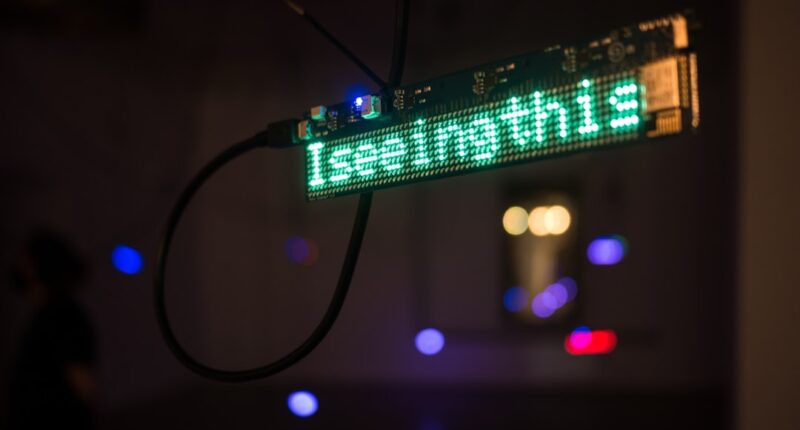Non-fungible tokens (NFTs) are digital assets that represent ownership or authenticity of unique items or content, such as artwork, videos, music, or collectibles, using blockchain technology. Unlike fungible cryptocurrencies like Bitcoin or Ethereum, which can be exchanged on a one-to-one basis, NFTs are unique and cannot be directly exchanged for one another. This uniqueness is the source of their value and appeal to collectors and enthusiasts.
NFTs are typically created and traded on blockchain platforms supporting smart contracts, which are self-executing agreements with terms written directly into code. This enables automatic ownership transfer and ensures the authenticity and provenance of the digital asset. In recent years, NFTs have gained significant attention due to their potential to transform how digital content is bought, sold, and owned.
They have also created new opportunities for artists, creators, and content producers to monetize their work in the digital realm.
Key Takeaways
- NFTs are unique digital assets that represent ownership of a specific item or piece of content, using blockchain technology to verify their authenticity and ownership.
- Unlike cryptocurrencies, NFTs are non-fungible, meaning they cannot be exchanged on a one-to-one basis like Bitcoin or Ethereum.
- The value of NFTs is determined by factors such as scarcity, demand, and the reputation of the creator, and ownership is recorded on the blockchain, providing a transparent and secure way to verify authenticity.
- Blockchain technology plays a crucial role in NFTs by providing a decentralized and secure ledger for recording ownership and transaction history, ensuring the integrity of the digital assets.
- NFTs are gaining popularity in the art world, allowing artists to tokenize their work and sell it as a unique digital asset, opening up new opportunities for creators and collectors alike.
- Potential risks and challenges of NFTs include copyright infringement, market volatility, and environmental concerns related to the energy consumption of blockchain networks.
- The future of NFTs holds promise for various industries, including gaming, music, and real estate, as they continue to revolutionize ownership, authenticity, and digital asset management.
How NFTs are Different from Cryptocurrencies
Characteristics of Cryptocurrencies
Cryptocurrencies, such as Bitcoin and Ethereum, are fungible digital assets that can be used as a medium of exchange, store of value, or unit of account. They are interchangeable with one another and can be divided into smaller units for transactions.
Characteristics of NFTs
On the other hand, NFTs are non-fungible and represent ownership or proof of authenticity of a specific digital asset. Each NFT is unique and cannot be exchanged on a like-for-like basis. NFTs are often used to represent digital artwork, collectibles, or other unique items, and their value is derived from their scarcity and authenticity.
Different Use Cases
While cryptocurrencies have gained popularity as a form of digital currency and investment, NFTs have emerged as a new way for creators and artists to monetize their digital content and for collectors to own and trade unique digital assets.
The Value and Ownership of NFTs

The value of NFTs is derived from their scarcity, authenticity, and the demand for the underlying digital content or item they represent. Unlike physical assets, such as paintings or sculptures, which can be replicated or forged, NFTs provide a secure and transparent way to prove ownership and authenticity of digital assets. This has led to a surge in interest from collectors, investors, and enthusiasts who see NFTs as a new way to own and trade unique digital content.
NFTs also provide creators and artists with a new avenue to monetize their work in the digital space. By tokenizing their artwork, music, videos, or other digital content, creators can sell limited edition or one-of-a-kind pieces directly to collectors without the need for intermediaries. This has the potential to revolutionize the art world and empower artists to take control of their own distribution and sales channels.
The Role of Blockchain Technology in NFTs
Blockchain technology plays a crucial role in the creation, authentication, and trading of NFTs. Blockchain is a decentralized and distributed ledger that records all transactions across a network of computers. This ensures transparency, security, and immutability of the data stored on the blockchain.
When it comes to NFTs, blockchain technology is used to create a unique token that represents ownership or proof of authenticity of a specific digital asset. Smart contracts, which are self-executing contracts with the terms of the agreement between buyer and seller directly written into code, are often used in conjunction with NFTs to automate the transfer of ownership and ensure the authenticity and provenance of the digital asset. This eliminates the need for intermediaries and provides a secure and transparent way for buyers and sellers to trade NFTs.
The Growing Popularity of NFTs in the Art World
NFTs have gained significant traction in the art world as a new way for artists to monetize their digital creations and for collectors to own and trade unique digital artwork. The ability to tokenize digital art using NFTs has opened up new opportunities for artists to reach a global audience and sell their work directly to collectors without the need for traditional galleries or auction houses. Several high-profile artists have embraced NFTs as a way to showcase and sell their digital artwork, leading to record-breaking sales and increased visibility for the medium.
This has sparked a wave of interest from both established artists and emerging creators who see NFTs as a way to innovate and disrupt the traditional art market.
Potential Risks and Challenges of NFTs

Environmental Impact of NFTs
One of the main concerns is the environmental impact of NFTs, particularly in relation to the energy consumption of blockchain networks used to create and trade NFTs. The process of minting NFTs on certain blockchain platforms has been criticized for its high energy consumption, leading to debates about the sustainability of NFTs in their current form.
Copyright Infringement and Intellectual Property Rights
Another challenge is the issue of copyright infringement and intellectual property rights in the context of NFTs. The ease of creating and selling digital content as NFTs has raised questions about how to protect the rights of creators and ensure that they are fairly compensated for their work.
Legitimacy of Digital Assets
There have been instances of unauthorized use of copyrighted material being tokenized as NFTs, leading to legal disputes and concerns about the legitimacy of certain digital assets.
The Future of NFTs and Their Impact on Various Industries
The future of NFTs holds great potential for various industries beyond art and collectibles. NFTs have already begun to make an impact in areas such as gaming, music, fashion, real estate, and sports, where they are being used to create unique digital experiences, authenticate memorabilia, tokenize real-world assets, and engage fans in new ways. In the gaming industry, NFTs are being used to create rare in-game items, characters, and virtual land that players can buy, sell, and trade on blockchain-based marketplaces.
This has the potential to revolutionize the gaming economy by allowing players to truly own their virtual assets and transfer them between different games. In the music industry, NFTs are being used to release exclusive music tracks, albums, and collectibles directly to fans, providing artists with new revenue streams and fans with unique digital experiences. In conclusion, NFTs represent a new frontier in the digital economy, offering unique opportunities for creators, collectors, and industries alike.
While there are challenges that need to be addressed, the potential for NFTs to revolutionize ownership, authenticity, and monetization in the digital space is undeniable. As blockchain technology continues to evolve and new use cases for NFTs emerge, it will be fascinating to see how this innovative technology shapes the future of various industries.
If you’re interested in learning more about the potential career opportunities in the NFT space, check out this article on NFT-Jobs.com. It provides insights into the growing job market within the non-fungible token industry and offers valuable information for those looking to break into this exciting field.
FAQs
What is an NFT?
An NFT, or non-fungible token, is a digital asset that represents ownership or proof of authenticity of a unique item or piece of content, such as artwork, music, videos, or collectibles, using blockchain technology.
How do NFTs work?
NFTs work by using blockchain technology to create a digital certificate of ownership for a specific item or piece of content. This certificate is then stored on a decentralized ledger, making it tamper-proof and verifiable.
What makes NFTs different from cryptocurrencies like Bitcoin or Ethereum?
While cryptocurrencies like Bitcoin and Ethereum are fungible, meaning each unit is interchangeable with another, NFTs are non-fungible, meaning each one is unique and cannot be exchanged on a one-to-one basis.
How are NFTs bought and sold?
NFTs are bought and sold on online marketplaces that specialize in digital assets, using cryptocurrency as the primary form of payment. These marketplaces often use smart contracts to facilitate the transfer of ownership.
What are the benefits of owning an NFT?
Owning an NFT can provide proof of ownership and authenticity for digital assets, as well as potential for value appreciation if the NFT represents a popular or in-demand item or piece of content.
What are some potential risks or drawbacks of NFTs?
Some potential risks of NFTs include the speculative nature of the market, potential for copyright infringement, and environmental concerns related to the energy consumption of blockchain technology.





